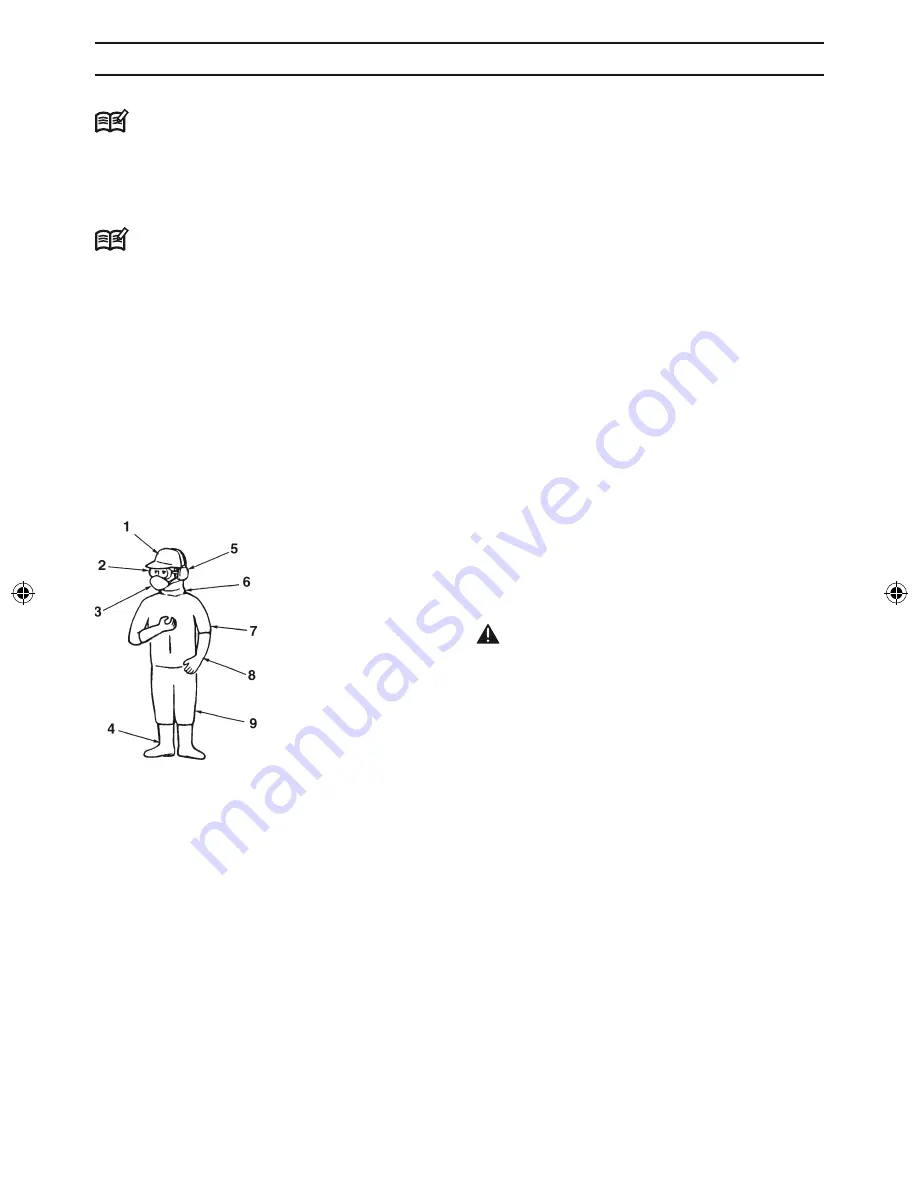
6 - English
NOTE
To avoid noise complaints, in general,
operate product between 8 a.m. and 5
p.m. on weekdays and 9 a.m. to 5 p.m. on
weekends.
NOTE
Check and follow the local regulations as to
sound level and hours of operations for the
product.
PRECAUTIONS BEFORE SPRAYING
• Make sure you have the correct protective
clothing, headgear, rubber gloves and
boots, a protective mask, goggles, a towel,
protective cream, etc., to prevent chemicals
from coming into contact with your skin or
entering your lungs. When spraying, wear
this protective gear to prevent any risk of
injury.
• S
tore chemicals in a locked storage box,
locker, or other safe place out of the reach of
children.
• Carefully read the instructions for using the
chemicals, and familiarize yourself with the
level of toxicity, method of use, etc.
• Pay all due consideration to the area in
which you will be spraying, to ensure that
you do not pollute the water supply, rivers,
lakes, ponds, etc., or cause any damage to
residents, passers-by, livestock, etc.
• Prepare yourself physically on the day before
spraying, by for example cutting down on
alcoholic beverages or late-night work.
• Do not allow children, animals, etc., to enter
the chemical spraying area.
• Before spraying, prepare fully by inspecting
sprayer nozzles and checking for
abnormalities such as loose screws or spray
hose connections, fuel leaks, defective
or broken fluid gaskets, or damage to the
carrying band.
PRECAUTIONS WHEN TRANSPORTING
CHEMICALS
•
When transporting chemicals, handle with
care to ensure that there is no spillage of
chemicals from torn bags, broken bottles, or
loose stoppers.
• Do not carry chemicals in the same container
as food.
PRECAUTIONS WHEN TRANSPORTING
THE SPRAYER
•
Do not transport the sprayer while it has
chemicals or fuel in the tank, as these
could leak out as a result of impact during
transportation.
• When transporting in a vehicle, use a rope or
similar to fix the sprayer firmly to the cargo
trailer in an upright position. Do not transport
by bicycle or motorbike, as this is dangerous.
PRECAUTIONS CONCERNING FUEL
WARNING
To reduce the risk of fire and burn injury:
a) Handle fuel with care. It is highly flammable.
b) Do not smoke while handing fuel.
c) Do not refuel a hot engine.
d) Do not refuel a running engine.
e) Avoid spilling fuel or oil. Always wipe
unit dry before using.
f ) Move at least 10 ft. (3 meters) away from the
fueling point before starting the engine.
g) Always store gasoline in a container approved
for flammable liquids.
h) Make sure the unit is properly assembled and
in good operating condition.
PRECAUTIONS WHEN REFILLING
CHEMICALS
•
Before filling the sprayer tank with chemicals,
make sure to check if a bottom shutter (outlet
valve) of the tank is fully closed. Opened shutter
is dangerous because chemicals will be sprayed
simultaneously with the engine start.
• After chemical refilling, firmly tighten the
tank cap. If not fully tightened the cap may
become loose during spraying, with the risk
of physical exposure to the chemicals.
Safety Precautions
1. Protective headgear
2. Protective goggles
3. Protective mask
4. Rubber boots
5. Ear muffs
6. Neck covering
7. Protective clothing
8. Rubber gloves
9. Protective clothing
H1152413-26,362D28,GB.indd 6
2009-10-15 15.58






































